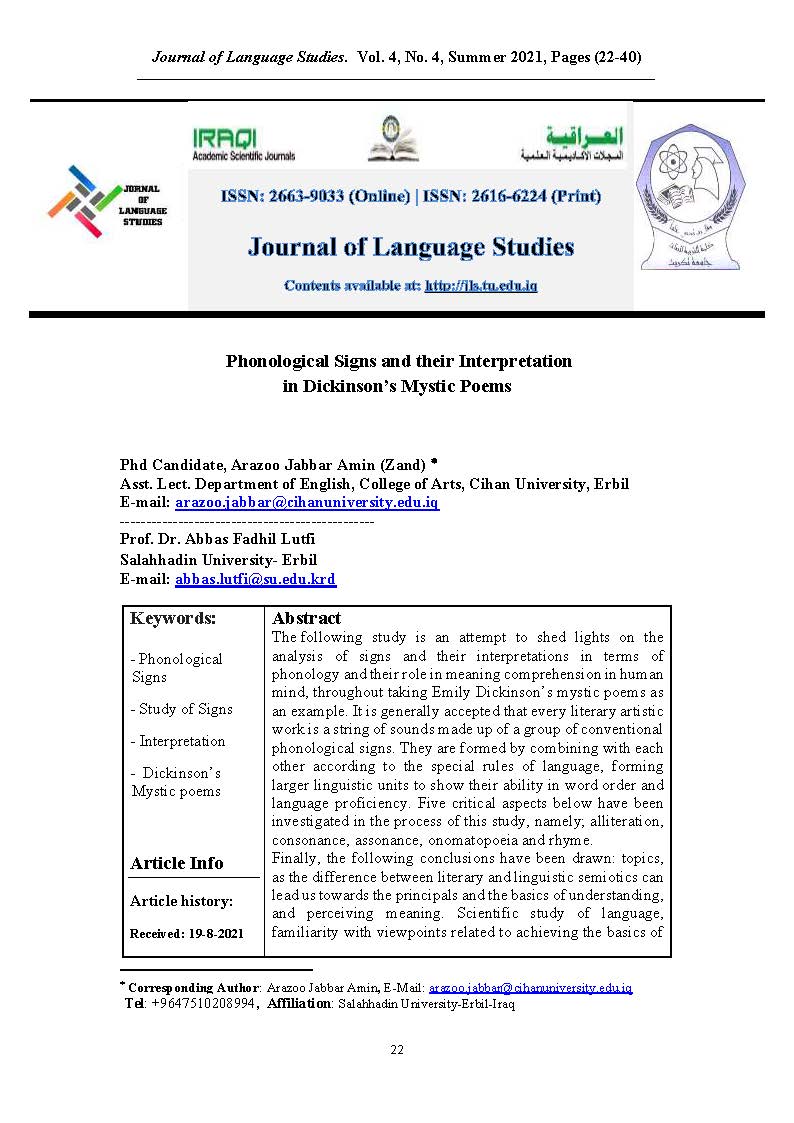Phonological Signs and their Interpretation in Dickinson’s Mystic Poems
Arazoo Jabbar Amin
Department of English, College of Arts, Cihan University, Erbil
Abbas Fadhil Lutfi
Salahhadin University- Erbil
DOI: https://doi.org/10.25130/jls.4.4.25
Keywords: Phonological Signs, Study of Signs, Interpretation, Dickinson’s Mystic poems
Abstract
The following study is an attempt to shed lights on the analysis of signs and their interpretations in terms of phonology and their role in meaning comprehension in human mind, throughout taking Emily Dickinson’s mystic poems as an example. It is generally accepted that every literary artistic work is a string of sounds made up of a group of conventional phonological signs. They are formed by combining with each other according to the special rules of language, forming larger linguistic units to show their ability in word order and language proficiency. Five critical aspects below have been investigated in the process of this study, namely; alliteration, consonance, assonance, onomatopoeia and rhyme. Finally, the following conclusions have been drawn: topics, as the difference between literary and linguistic semiotics can lead us towards the principals and the basics of understanding, and perceiving meaning. Scientific study of language, familiarity with viewpoints related to achieving the basics of perception, aesthetic analysis and cognitive semiotics of perceiving texts, have a great role. Dickenson’s poetry carries a kind of harmony that functions as the transporter of meaning and feeling in addition to the elements transferring meaning. There are major roles in the use of phonemes: meaning transferring, emphasis on the basic meaning, feeling transferring, increasing musicality and creating coherence

